automation
Latest
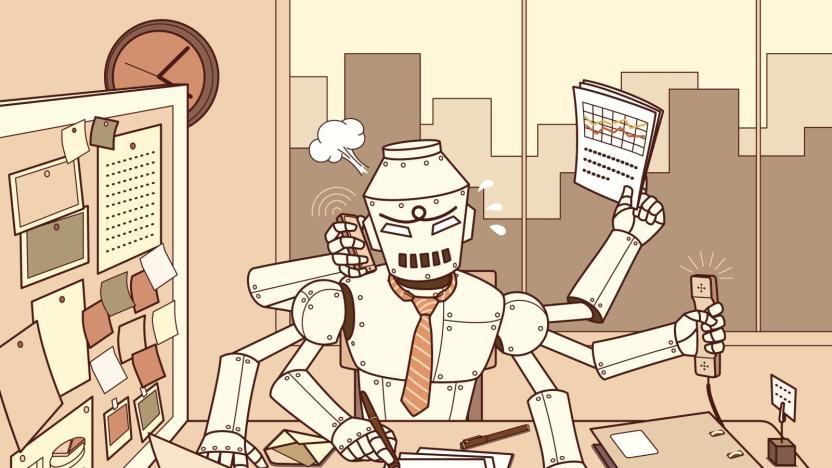
AI and automation are making office life easier
AI and automation have revolutionized the manufacturing sector with robots working alongside humans on factory floors. Now, those same sorts of technologies are beginning to find their way into corporate offices and are rapidly changing the way we conduct business.
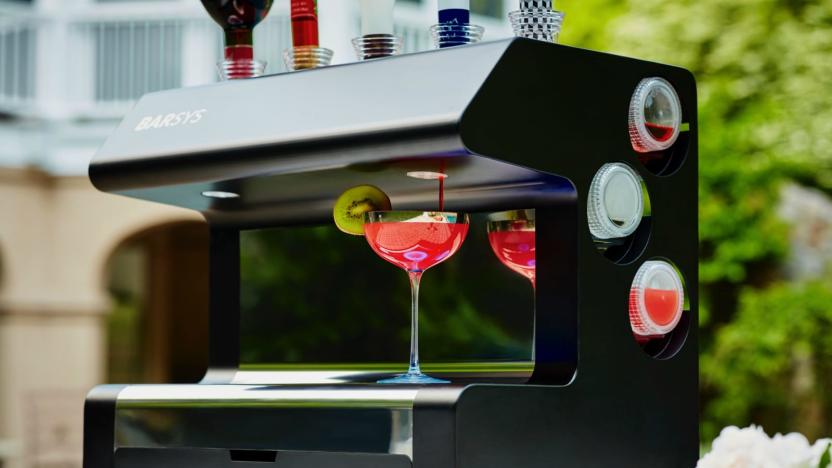
Barsys $1,500 robot bartender promises cocktails with AI precision
The "Keurig of cocktails" concept isn't exactly new, but that's not stopping companies like Barsys from perfecting the robotic bartender. Next week, Barsys is launching its robotic cocktail mixer 2.0. Like the original, the next iteration offers automated cocktails and customizable drink recipes. But now, you'll be able to control the machine with up to three devices at a time, thanks to Bluetooth. And Barsys 2.0 will use AI to keep drinks consistent.

After Math: Flipping the Switch
Nintendo wasn't the only company this week making headlines about switches. Facebook's poker playing AI turned the tables on some Texas Hold'em pros, Foxconn pulled the old switcheroo on the state of Wisconsin, and Luminar's new LiDAR is poised to turn the autonomous vehicle market on its ear.

Amazon plans to retrain one-third of US employees as automation grows
Amazon announced today that is is planning on retraining one-third of its workforce to help ease the effects of automation. The e-commerce giant is pledging $700 million that will go to providing "upskill" training designed to move people in positions vulnerable to automation into new jobs across the company. As many as 100,000 employees are expected to undergo the retraining process by 2025.

Robotic dishwasher saves restaurants from drudgery
Restaurants and other eateries are facing a shortage of dishwashers, and for understandable reasons -- it's inglamorous work with low pay. Dishcraft, at least, thinks robots can fill that gap. It just revealed a robotic dishwasher intended to clean large volumes of plates in commercial kitchens. Once customers stack plates on a special cart, a staffer just has to wheel that cart into the robot. From there, the machine flips the plate upside-down and uses both cold water and a brush to wipe the surface clean within seconds. AI-guided cameras then scan dishes to see if dishes need another scrub before they head to the dish rack.

Amazon might start using robots to box your orders
A few weeks ago, Amazon said it will be at least 10 years before the company is running fully-automated warehouses. But partial automation is already underway. According to Reuters, Amazon is considering installing two machines at dozens of warehouses that have the potential to replace at least 24 jobs at each location. If Amazon were to roll the machines out across its 55 US fulfillment centers for standard-sized inventory, that could lead to more than 1,300 job cuts.
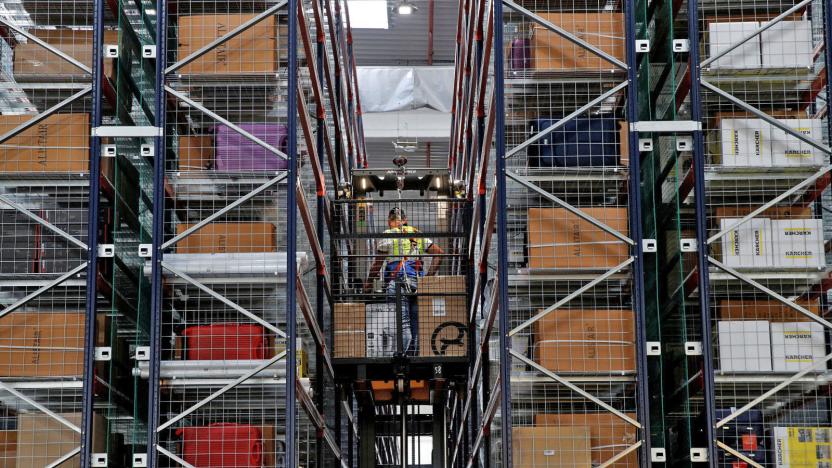
Amazon's warehouse robots won't replace humans for at least a decade
Are you worried your job is going to be taken by a robot? You needn't be if you work for Amazon, which has dismissed the idea of fully-automated warehouses becoming a reality any time soon. According to Amazon's director of robotics fulfilment, Scott Anderson, such technology in its current form is "very limited."

Sony's robot-themed art installation somehow felt like a cat cafe
With legitimate economic uncertainties for some of us, paired with predictions of a dystopian end of days at their hands, tech like robots, AI and automation have earned a bad rap. Sony has taken a soft-touch approach when it comes to robotics, perhaps best illustrated by its iconic electronic pet, Aibo. It's just one effort from a company that has seen a resurgence over the last few years, not just through a redesigned robot dog, but also its work on self-driving car sensors. Alongside CES and the other usual tech shows, Sony has been attending Milan Design Week for the past few years, and this time its lofty concepts touch on artificial intelligence, robotic empathy and how we're all going to feel about it. I wouldn't say I walked away with any answers, however.

Alexandria Ocasio-Cortez believes we should be excited about automated jobs
Left-wing US politicians have landed at SXSW 2019. A day after sharing her proposal to break up companies like Facebook, Google and Amazon, US Senator Elizabeth Warren (D-MA) expanded on her plans at the event. And she wasn't the only one from her party here today. On Saturday, Congresswoman Alexandria Ocasio-Cortez (D-NY) featured in a session where she notably didn't talk about Big Tech, but instead focused on the Green New Deal and automation, among other topics including pay inequality and racism.

New Google Docs toolkit can automate tasks
Are you tired of having to wade through Google Docs files, or make countless changes to templates every time you want to use them? Google might soon bring relief. It's officially launching a Google Docs programming interface that lets developers automate many common tasks, whether it's inserting text, changing the formatting or managing lists. If you're producing invoices, for example, an app could automatically fill out product info and numbers.

OMRON's redesigned ping pong robot no longer holds back
OMRON is best known for its healthcare products like thermometers and blood pressure monitors -- now in the form of a smartwatch, even. But those who have been following our CEATEC coverage over the past five years may remember the company's ambitious exhibit: the Forpheus table tennis robot. Little did I know that I would bump into this old friend here at CES. The machine is now in its fifth generation and packed with some surprising upgrades -- let's just say my parents would be disappointed in me if they were there.
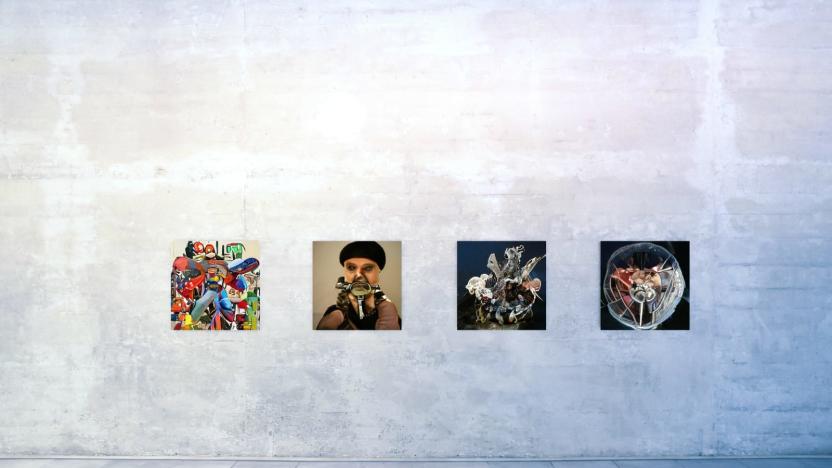
'AmalGAN' melds AI imagination with human intuition to create art
Don't worry, they only look like the Pokemon of your nightmares. The images you are about to see are, in fact, at the very bleeding edge of machine-generated imagery, mixed with collaborative human-AI production by artist Alex Reben and a little help from some anonymous Chinese artists. Reben's latest work, dubbed AmalGAN, is derived from Google's BigGAN image-generation engine. Like other GANs (generative adversarial networks), BigGAN uses a pair of competing AI: one to randomly generate images, the other to grade said images based on how close they are to the training material. However, unlike previous iterations of image generators, BigGAN is backed by Google's mammoth computing power and uses that capability to create incredibly lifelike images. But more important, it can also be leveraged to create psychedelic works of art, which is what Joel Simon has done with the GANbreeder app. This web-based program uses the BigGAN engine to combine separate images into mashups -- say, 40 percent beagle, 60 percent bookcase. What's more, it can take these generated images and combine (or "breed") them into second-generation "child" images. Repeating this breeding process results in bizarre, dreamlike pictures. Reben's contribution is to take that GANbreeder process and automate as much of it as humanly possible. Per the AmalGAN site, 1. an AI combines different words together to generate an image of what it thinks those words look like 2. the AI then produces variants of those images by "breeding" it with other images, creating "child" images 3. another AI shows the artist several "child" images, measuring his brainwaves and body-signals to select which image he likes best 4. step 2 and 3 are repeated until the AI determines it has reached an optimal image 5. another AI increases the resolution of the image by filling in blanks with what it thinks should exist there 6. the result is sent to be painted on canvas by anonymous painters in a Chinese painting village 7. a final AI looks at the image, tries to figure out what is in it, and makes a title The first two steps are handled by GANbreeder. "As far as I understand it, right now [GANbreeder mixes images] randomly," Reben told Engadget. "So it decides to either increase or decrease the percentages of the two images or add new models. You know, like 5 percent cow, and that'll be one of the images that it shows." Once the system has conceived a sufficient selection of potential pictures, Reben pares down the collection using a separate AI trained to determine how much he likes a specific piece based on his physical reaction to it. "I trained a deep learning system on the body sensors that I was wearing," Reben explains. "I had a program show me both good and bad art -- art that I liked, and art that I didn't like -- and I recorded the data." He then used that data to train a simple neural network to figure out the physiological differences between his reactions. "Basically, it gives you that sort of dichotomous indication of what this art is [to me] from my brain waves and body signals," he continued. "It picks up on EEG; I also have heart rate and GSR. I think I might also add facial-emotion-recognition stuff through my webcam." The selection process varies between image sets, Reben said. Sometimes the "right" picture would appear among the first presented by the AI; others required him to dig through multiple generations of child images to find one he liked. Once he's selected the specific images he plans to include in the official project, Reben has the digital images oil painted onto canvas by anonymous Chinese artists. "The easiest 'why' is because I can't paint," Reben quipped. "Using anonymous Chinese painters is another link in this autonomous system, where my hand is not on the artworks -- just my brain and my eyeballs." Transferring the works to a physical medium also helps sidestep an inherent shortcoming of the BigGAN system: The fact that the images are so resource-heavy to produce, they've yet to be created at a size larger than 512 x 512-pixel resolution. The anonymous artists are "basically using human brain power to upscale that image into a canvas," he said. "So that aspect of it is also interesting because there's gonna be a little bit of human interpretation." Finally, Reben uses Microsoft's CaptionBot AI to create titles for each image. "I thought it was interesting removing more and more of a human from the process," Reben concluded. "I also like seeing what the AI interprets these as ... because it doesn't catch everything." For now, the BigGAN engine doesn't have very many practical applications, and its research paper, which was published in September, is under review for a 2019 AI conference. The system itself has a bit of a counting problem, as evidenced by its continual insistence that clock faces have more than two hands and spiders have anywhere from four to 17 legs, but these idiosyncrasies could prove a boon to artists like Reben and Simon. "One of the things Joel [Simon] is doing... is he would like to turn that tool that website into a tool for creative people," Reben said. Artists would be able to train the system on their own images, not just Google's stock set, experiment with the output levels, and "use it as a way to sort of spark imagination and creativity, which I think is great." If you're interested in getting prints of any of these pieces, check out the Charles James Gallery.

Amazon Go is the inevitable evolution of supermarket retail
Amazon's cashierless "Go" markets have popped up in San Francisco, Seattle and Chicago, promising patrons the "future of shopping": a frictionless grocery buying experience that relies on high-tech tracking technology instead of human interaction to get products off the shelves and into your canvas totes. This indeed may be the supermarket of the future, at least as Bezos envisions it, but not one that we couldn't have predicted. The development of the Go shopping experience is little more than the latest step in the logical evolution of retail.
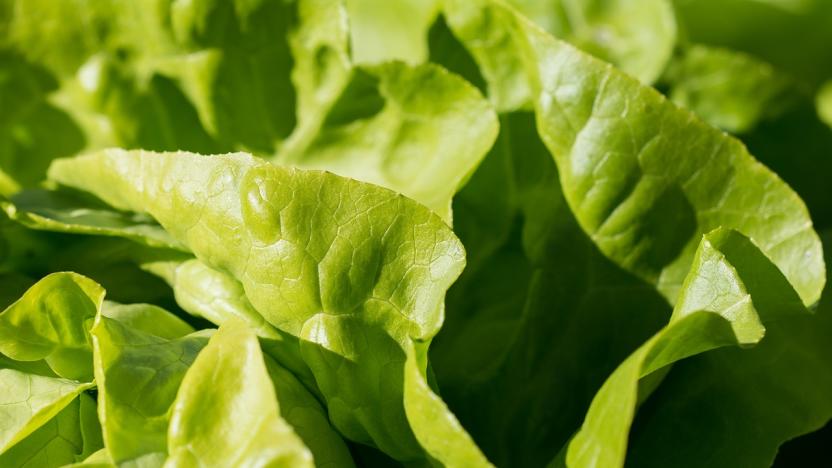
Robots are learning to carefully peel lettuce leaves
Technology is designed to improve and streamline every facet of life, and that inevitably includes areas most people would never even think about. Such a lettuce peeling. A random issue for many, perhaps, but for the agriculture industry, a new development in this field is a big deal. Researchers from Cambridge University have developed the first robotic lettuce leaf peeling system, which not only demonstrates advances in automation, but addresses increasing food and labor demands.
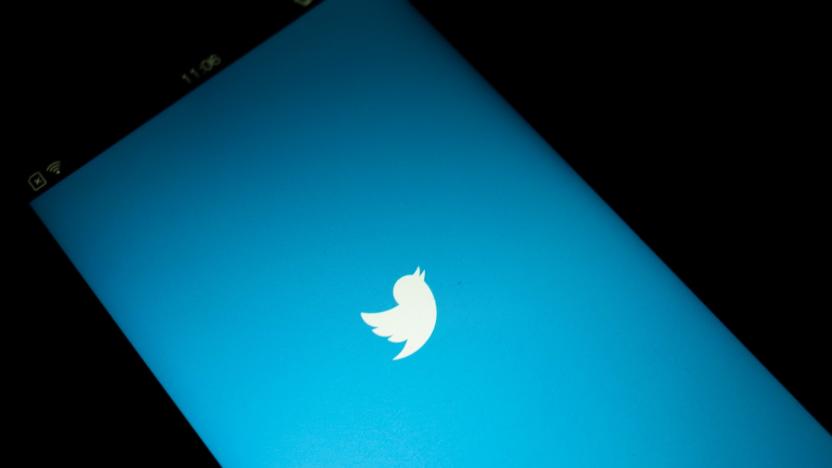
New Twitter users will have to verify a phone number or email address
Twitter has begun to acknowledge that it has persistent problems with malicious automation and spam accounts and it has been working on ways to fix these issues. Today in a blog post, the company shared some of its efforts as well as the progress it has made in some areas. First, it said that its machine learning tools have allowed it to spot more automated accounts without the need to rely on reports from others. Last month, Twitter said its systems "identified and challenged more than 9.9 million potentially spammy or automated accounts per week." A pace that's up from 6.4 million in December and 3.2 million last September. At the same time, reports of spam dropped from around 25,000 per day in March to approximately 17,000 per day in May.

America can't solve its migrant labor crisis with automation
From the moment that Donald Trump set foot on the Trump Tower escalator, the promise of mass deportations for undocumented immigrants was a pillar of his presidential campaign. This is one promise that the current administration has managed to keep, with ICE enforcement efforts skyrocketing since Trump took office in January 2017. While the president's executive orders on immigration have played well with his political base, they've caused havoc with a number of US industries, from tourism to construction. But nowhere are the detrimental effects of these policies more clearly illustrated than in the agricultural sector. What's more, the current state of agricultural automation appears woefully unprepared to fully supplement the loss of migrant labor.
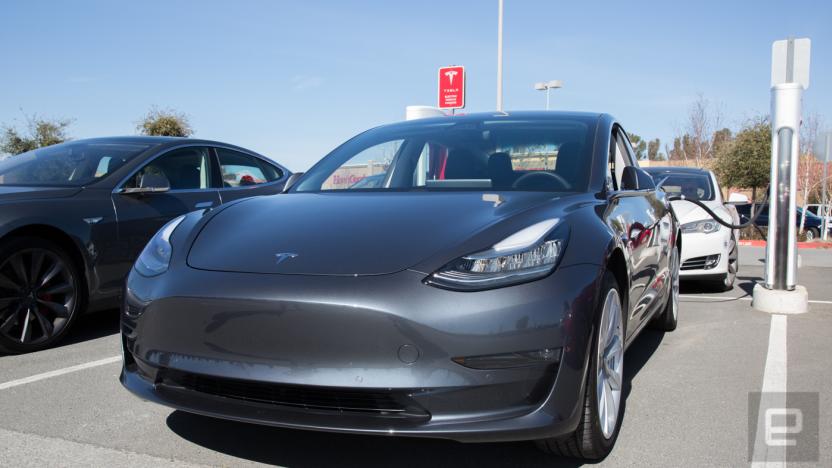
Elon Musk agrees robot glut slowed Model 3 production
Tesla's affordable Model 3 has been trapped in development hell for what seems like ages now, and in an interview with CBS's Gayle King, CEO Elon Musk offered a little more insight into how the production process has fallen short. While escorting King through the company's Fremont, California-based factory, Musk conceded that Tesla might've had too many robots involved in its car production process and that the company would benefit from having more humans on the line. And when King opined out loud that in some cases, said robots probably slowed down production, Musk responded with a terse "yes, they did."
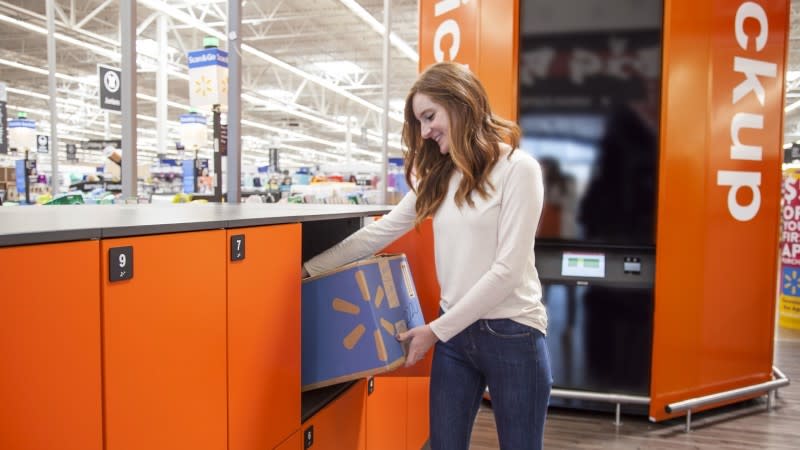
Walmart is adding 500 more 'Pickup Towers' to stores this year
Walmart is expanding the amount of its in-store "Pickup Towers" for online orders. The retailer is adding some 500 more of the across the country by year's end. Walmart says once the rollout is complete, nearly 40 percent of the country will have access to the automated kiosks. The physical size is expanding as well, and you'll be able to pick up the new TV your ordered with a few UHD Blu-rays from connected lockers. Maybe don't expect to snag a 65" OLED though.
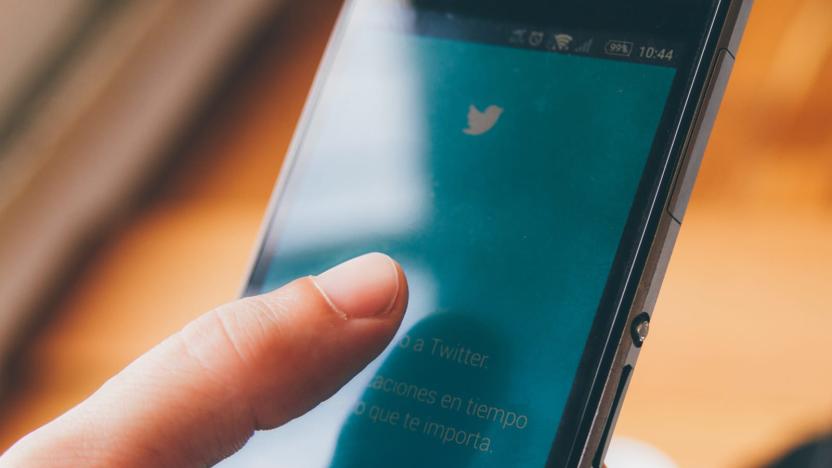
Twitter's new rules prohibit bulk tweeting to fight spam
Twitter's spam bot issue isn't new, but it came to a head when it was revealed that thousands of Russian troll accounts used the platform to influence the 2016 Presidential elections. Now, the company has announced a set of changes and new developer guidelines meant to fight off automated actions and to make it harder for "tweetdeckers" to flood the social network. Starting on March 23rd, 2018, apps will need to be able to prevent bulk tweeting or face "enforcement action, up to and including the suspension of associated applications and accounts."

Glasgow subway trains will be the UK’s first with no staff
Glasgow's subway system will be the first in the UK to operate trains with zero staff on board. As The Scotsman notes, Strathclyde Partnership for Transport (SPT) had already announced that a new batch of Swiss-built trains will be driverless. Now, however, the subway operator has confirmed that they won't have any guards or conductors either. "We will always have staff in the system, but it is not our plan to have a member of staff on every train," Charles Hoskins, a senior director at SPT told the newspaper.












